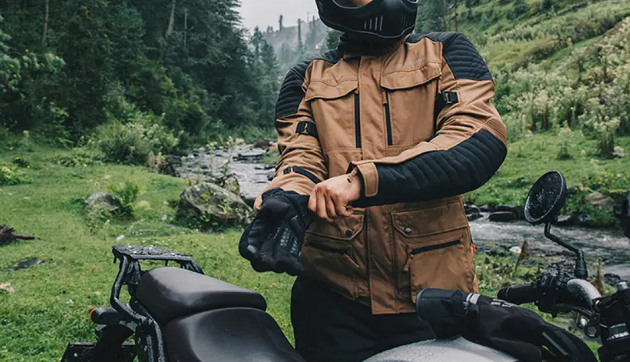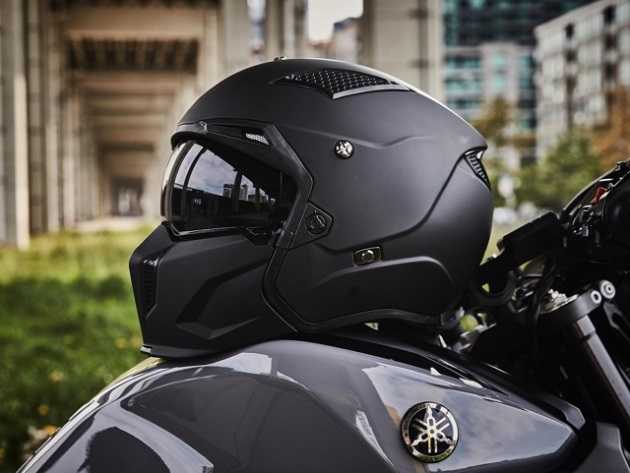A Guide to Motorcycle Safety Gear: Where Safety Meets Comfort
When you’re a motorcycle rider, safety is paramount. You shouldn’t compromise on it in any way. Did you know that more than 1,000 motorcycle riders lost their lives in the last 5 years in Australia? This is a concerning number, considering that more than 50% of them were among the younger population.
Knowing and understanding your motorcycle is crucial but you can’t do without the right gear for protection. Besides minimising your accident risks, safety gear also protects you from noise, wind, sun, cold and debris. It’s kind of like your second skin, and it should feel that way, comfortable and nicely fitted.
Jacket

Motorcycle jackets are one of the must-have clothing items when you’re a motorcycle rider. They are usually made of leather or textile, or a combination of both. There are many high-quality motorbike jackets Australia has on the market, and your money won’t be spent in vain. The jackets can resist abrasion and are often water-resistant which can be an awesome feature if you live in a rainy area.
Leather is the more durable option but, if you’re on a budget, there are nice textile jackets as well. They have special features such as doubled-up seams, a snuggle fit so the wind won’t interfere when you ride at high speed and even air vents that provide breathability and prevent you from over-sweating. All of them should have body armour. This is another layer of protection that cushions the fall.
The fit is very important when it comes to these specific motorbike jackets Australia biking shops have in stock. You want to have the right size. Your arms and elbows should feel free inside of it without obstructing your movement in any way. A jacket that’s too loose will interfere with the wind and give you trouble while riding. It won’t let you focus on the ride and can lead to an accident. The weather also has an impact on your choice.
If you live in a hot area, mesh jackets with vents will be the right choice. But if you live in a colder climate, something with more insulation will do. There are jackets that have zippers on the bottom, and you can connect them with the pants. They’ll look like a body suit while wearing them. This prevents the jacket from slipping up in case of a crash.
Pockets, of course, are optional. They don’t have a big function with this piece of clothing because it’s not recommended to wear anything in them while you ride. Maybe an inside pocket will do for keeping your driver’s licence or insurance. When it comes to colour people often go for darker tones. But keep in mind that you should be visible to the rest of the drivers – especially in low light conditions. So, if you go black, make sure it has some reflective tape in the back and the front.
Pants
A lot of people think that jeans are an acceptable clothing choice for motorcycle riding, but they’re not. They don’t provide any type of protection whatsoever. Cotton won’t work either. The best materials for the pants are textile, Kevlar and leather. Textile pants are designed to be worn as a layer over regular pants. You can combine them with the motorbike jackets Australia offers to create a suit as well.
Leather would be the best choice. It provides maximum protection to your knees and hips in case of a fall. Always try the pants before buying them. Hop on a bike or stand in a typical riding position to see if they’re too tight or too loose. Keep in mind that the armour should stay in the right places when you move around.
Helmet

This piece of safety gear should not even be a topic of discussion. You have to wear it. Period. When your face hits the pavement, and there’s a 45% chance of this happening, you’ll be glad you have it on you. Much like special biking clothing, in the example of fancy motorbike jackets, the head wear is an absolute must.
A full-face helmet will also protect your head from insects and debris that might bump into you while riding. Sunburn may be another issue, but as long as you have the helmet, you won’t have to worry about that either. Helmets actually have a lifespan of 5 years, after that they’re not so safe to wear because the adhesiveness and materials are not so sturdy.
Needless to say, you should never buy a used helmet. It might not be damaged on the outside, but you can’t see if there’s something wrong on the inside. Full-face helmets provide coverage of the whole head. Their visors often have a finish such as dark tint, light tint or it’s a simple clear one. It also has ventilation and allows you to hear outside noises.
The ¾ helmets don’t have full coverage. They have an opening at the front which means only the sides, top and back of your head is covered. The visors flip down from the top and your chin, nose and mouth are left unprotected. On the other hand, the ½ helmets cover the top and partially the sides and back of your head. If you choose this one, you should probably add goggles or glasses for extra safety.
Boots
Your pair of boots should be very sturdy. They should have non-slip soles, oil resistance and very good ankle support. This way you’ll have your ankles and legs reinforced at any time. If you want to test if the boots are of good quality and will do their job properly, grab them on the heel and at the toes. Then, start twisting them. If they twist too much and it looks like your legs won’t survive, chances are they probably won’t.
Boots should have a strong heel and a sturdy toe box on the inside. This way you’ll get maximum protection in case of an impact. They should also have ankle protection and increased torsional stiffness. So, if your leg gets trapped under the bike, you won’t gain any serious ankle injury. If they have any laces, make sure they’re on the inside to prevent tangling them in the bike. Leather was the to-go material for a long time, but then manufacturers created textile boots with lots of breathability and water-resistance properties.
Gloves
Your hands are really delicate. It’s in our human nature to put our hands up and protect our heads when we fall, so keep in mind they will touch the ground first in case of a fall. That’s why they should be completely covered when riding. The gloves should have good stitching and be made of sturdy materials.
Since your hands will land first in an accident, armour at the base of the palm is an excellent design element. Make sure your gloves don’t obstruct your ability to handle the bike. When it comes to colour and design you have many options. Dark and bright colours are all on the market and you can pair them with your jacket.